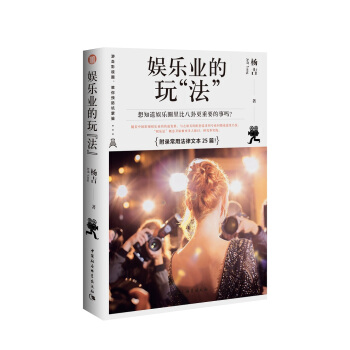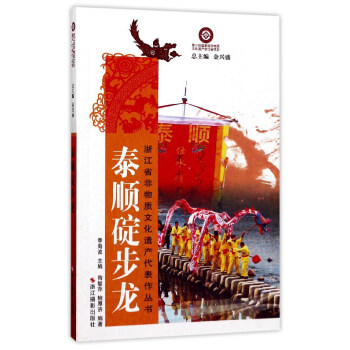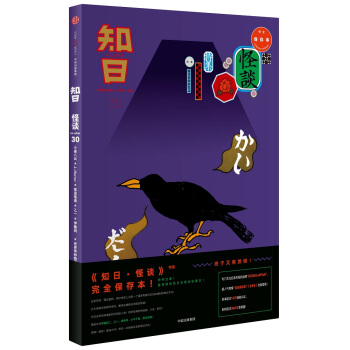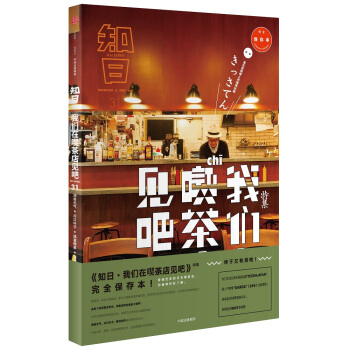![上海:梦之地 [Shanghai: Mosaic of Dreams]](https://pic.tinynews.org/12224628/59c3478bN33bb8169.jpg)

具体描述
编辑推荐
适读人群 :希望深入了解上海的外国友人,希望提升英语水准的中国读者,涉外导游等。The book is neither a history book nor a tour guide. It starts with people’s daily life and their stories, which actually reflects Shanghai’s history, culture and tradition behind. Anyone who is interested in Shanghai may read it from any page they like. To help readers have a rough idea of Shanghai and navigate easily to their interested topics, the book is divided into four sections, which are “Things you may not know about Shanghai”, “Shanghai Facts”, “Shanghai Style” and “Happening Shanghai”. After reading, readers may finally realize that Shanghai is a place worth visiting, working and living in.
内容简介
Shanghai is a place where East meets West and East meets a new self. It is a link between history and modernity, a bridge between local and global, and a showcase of inclusiveness and dynamism. According to our survey, however, not a few foreigners have out-of-date stereotypes about Shanghai, and even China. In order to introduce a developing and livable Shanghai to the world and attract global talents, the book aims to look into the details of Shanghai’s history, culture and people’s daily life, unfolding a unique view of the city that may be new for the reader. The book also tells stories of the newcomers who come to Shanghai for career, romance and more, showcasing Shanghai’s legacy as a city of dreams.
作者简介
The book was first compiled in Chinese under the guidance of Shanghai cultural experts, who contributed valuable inputs and comments on the structure and contents of the book, and guaranteed the facts to be true. Secondly, the book was translated by a team of native English speakers who have a good knowledge of both English and Chinese,such as Kathryn Minnick, Celine Garbutt and so on, presenting the contents in a native and appealing way. And it was finalized by Chai Mingjiong who commands nationwide prestige in the field of translation.
内页插图
精彩书评
1. 有角度,有高度,丰富充实了海派文化。
2. Most English books on Shanghai can be divided into the following types: chorography, tour guides and photo collections. Chorography may be too serious for the public to read; tour guides are mainly for travelling purposes; photo collections are visually pleasing but lack proper explanations. Therefore, we try to produce a book that introduces Shanghai in a structural and appealing way to foreigners, telling close-to-life stories accompanied with beautiful pictures. Instead of introducing official historical facts and cultural development, we focus on specific items such as time-honored brands, shikumen (a common housing architecture in Shanghai), nightlife, Shanghai-made food, etc. It is the details in life that attract readers and connect with them the most.
目录
PREFACE
THINGS YOU MAY NOT KNOW ABOUT SHANGHAI
SHANGHAI FACTS
A Tale of Two Rivers
History: Becoming Shanghai
Shape of Shanghai
Rise of a Global Financial Center
Elements of Urban Life
"Strange" Shanghainese
SHANGHAI STYLE
Traditionat Shanghai
Time-Honored Brands: A Modern Revival
Academies: Inheritance and Innovation
Shikumen: Traveling Back Through the Stone Gate
Everybody Loves the Bund
Get Thee to a Show!
Lost in Museums
The Ancient Towns Next Door
Tapestry of Belief
Chic Shanghai
Where Trends Begin
Creative Effervescence
Shake the Night
Just Buy It!
A Cup of Fun, Please
Taste Shanghai
East or West, Shanghai-made is the Best!
What's in the Salad Bowl?
It Only Tastes Right Here
HAPPENING SHANGHAI
You Are Part of Shanghai
Dialogues Through Time: Why Shanghai?
Interviews: Dreaming the Dream
Cefine Gar6utt: The Boundless Love Between Me and Chinese
Weichong Khor: Shanghai - a Great Entry Point into the
Chinese Market
Xu Chunchun: From London to Shanghai, From LSE to SerendiPPo
George Fleming:. Shanghai Life
Stone Shi: Combining a Love of Delicious Food and Entrepreneurship - Shanghai Presents Unlimited Opportunities
Will Boyd: A Shanghai Foreign Son-in-law Infatuated by Chinese Culture
精彩书摘
"Strange" Shanghainese
The Wikipedia article on “Shanghainese People” presents photos of six notable Shanghainese – Xu Guangqi , a pioneer in promoting Sino-Western cultural communication in the Ming Dynasty (1368-1644 CE); Zhou Xuan, an iconic singer nicknamed the “Golden Voice” in the 1930s; Soong Ching-ling , the “Mother of Modern China”; Eileen Chang, one of China’s most influential modern writers; as well as two well-known athletes, Yao Ming and Liu Xiang . In Chinese culture, a person’s hometown refers to his or her ancestral home. In this sense, these six notable people were not “authentic” Shanghainese – Zhou Xuan was born in Jiangsu Province; Soong Ching-ling’s father was born in Hainan Province; Eileen Chang came from a prestigious family in Hebei Province; and the hometowns of Yao Ming and Liu Xiang are in Jiangsu Province. As for Xu Guangqi, who is known as “the first Shanghainese” in modern times and whose grandparents and parents lived in Shanghai – his earlier ancestors were also migrants to the city.
The origin of these Shanghai celebrities reflects the fact that a majority of Shanghainese are migrants or descendants of migrants. During the 150 years since Shanghai was opened to foreign trade in 1843, the city witnessed four large waves of migration. In the 1860s, a large number of refugees from Jiangsu and Zhejiang provinces fled to Shanghai due to the Taiping Rebellion. In the 1910s, when the Republic of China was founded, Shanghai attracted a large group of migrants and even immigrants who were seeking their fortune due to the city’s stable environment and thriving economy. In the late 1940s, civil war drove numerous refugees into Shanghai. Later, in the 1990s, the development of the Pudong New Area led to Shanghai’s full recovery and a huge number of people from other regions and countries flocked here to start new careers and lives. As of the end of 2014, “permanent residents from other regions or countries” constituted 40 percent of the population of Shanghai; and a big portion of the remaining 60 percent was “New Shanghainese” who lived and worked in Shanghai and had obtained a Shanghai hukou.
Shanghai, due to its long history – similar to New York and Hong Kong – of accepting migrants, is an exception to traditional cities: it is always open to the whole world. It is a melting pot where people of various origins meet, where rules come before the power of clans and personal relations, and where people with different accents, backgrounds and viewpoints can talk freely. In the process, Shanghai has received both praise and criticism from people of other regions and countries.
Shanghainese have a reputation for being disciplined and trustworthy both in business and in daily life. They always play by the rules and seldom step out of line or take advantage of loopholes, thus enjoying high favor among their business partners worldwide. In addition, Shanghainese have a strong sense of responsibility. They play an active role in charity and voluntary work, ranging from community affairs to national or even global public welfare activities. Shanghainese are also regarded as well-bred people with broad horizons, as evidenced by the fact that Shanghai students often enroll in prestigious universities overseas and adult Shanghainese show a high level of proficiency in English that can rival Hong Kong residents. Even those who don’t particularly like Shanghainese have to admit that they have a taste for fashion and an elegant lifestyle and are competent at work and skillful in social interactions.
However, some traits of Shanghainese leave much to be desired. The most notorious is their exclusiveness. Although Shanghainese insist they only exclude those who show little respect for Shanghai culture and behave disgracefully when staying in the city, the conflict of interest resulting from a swelling population and the shortage of urban resources aggravates this tendency towards exclusion, turning it into “regional discrimination.” Shanghainese also come under attack for their shrewdness. Shrewdness can be seen as a sign of reason and wisdom, but in fact, the shrewdness of Shanghainese manifests more as being stingy, snobbish and calculating. What’s more, behind the attractive appearance of Shanghainese is a certain vulgarity of taste and manners. For example, they like to talk loud in dialect in public places and they walk their dogs or go shopping in their pajamas. Given the various stereotypes that the word “Shanghainese” conjures up, “You are nothing like a regular Shanghainese” seems to be the highest compliment someone can give to a native Shanghainese. It’s interesting that most Shanghainese willingly accept this kind of compliment.
To sum up, Shanghainese have a civic consciousness and uphold the rule of law like citizens in Western societies. They are also good-natured, elegant, shrewd and pragmatic like traditional Chinese people. Furthermore, they are sober-minded, wise and generous, but with a touch of narrowness and snobbery.
The character of Shanghai people is closely associated with the city’s development. Therefore, to find out why Shanghainese have developed such a complex and paradoxical character, we need to take a look at the city’s history.
Before opening to the outside world, Shanghai was not culturally or politically important. As a trading port, it had a favorable and diversified business environment, which helped lay the groundwork for the creativity, openness, inclusiveness and economic pragmatism that Shanghainese would show in later eras.
After the opening of Shanghai in the mid-19th century, people from Britain, the U.S., France, Russia and many other parts of the world came to this city. Most of these people lived in concessions governed by foreign powers. After several waves of internal migration, however, Chinese people gradually assumed the majority in the foreign concessions. Compared to migrants – mainly from Jiangsu, Zhejiang and Guangdong provinces – local residents living in the old part of Shanghai became the minority. The “intrusion” of domestic migrants and foreign settlers had a great influence on the Shanghainese character. On the one hand, domestic migrants became new Shanghainese and their native cultures became part of Shanghai culture. On the other hand, Shanghainese also learned quite a lot from the customs, values and social systems of foreign settlers. Consequently, Shanghai became China’s center of Western learning and Shanghainese took the lead in developing civic consciousness, cosmopolitanism and other modern concepts.
After the 1950s, Shanghai’s status declined. It was no longer an international trading port but rather a regional industrial center, and domestic migration was curbed by a strict household registration system. As a result, the international sensibility of Shanghainese evaporated and their pioneering spirit also diminished. To support the central government’s national development strategy, a large number of Shanghai professionals were also dispatched to other parts of China and most of the city’s fiscal revenue was handed over to the state. After seeing the material and cultural differences between Shanghai and other places in China, the dispatched Shanghainese began to feel superior to Chinese from outside Shanghai. Meanwhile, the tightening economy weakened the ambition of those who stayed in Shanghai. Instead of exploring the outside world, they were forced to ensure their livelihood by making every cent count. That is why more recent Shanghainese have been regarded as shrewd. However, thanks to reform and opening-up in the latter part of the 20th century, Shanghai’s spirit of openness was revived along with people’s humanistic vitality, which had been suppressed by straitened circumstances. In the early 1990s, Shanghainese still exhibited a certain sense of superiority and isolation due to the influence of the planned economy; however, in the new century, Shanghainese, including many migrants, have gradually recovered their open mind and warm heart, which is deeply rooted in their cultural genes.
Today’s Shanghainese are able to appreciate both refined and popular culture and live a life embracing both Chinese and Western features. If you are questioning whether by doing so they have betrayed both cultures or not, I suggest you see Shanghainese from a different angle and recognize their strong innate ability to fuse together different, seemingly contradictory qualities. With a tradition of embracing all different types of people, Shanghai has welcomed numerous migrants who have contributed to its dynamic population. In turn, these migrants have endowed Shanghai with more possibilities and opportunities for the future.
前言/序言
Shanghai was born a small fishing town. In time it became a textile center and manufacturer of lush fabric. Later, Shanghai itself became the fabric: a tapestry of threads from across China and later the globe, a mosaic of individual lives and aspirations, a city with arms as wide as the world.
Shanghai’s arms were first forced open to the broader world by the humiliations of colonialism in 1842, whose depredations continued for more than a century. But Shanghai proved more resilient than the colonial powers that tried to bring the city to its knees. Generations of new arrivals from both China and abroad found in Shanghai – and helped create in Shanghai – a spirit of tolerance, an embrace of the future, and the soil for nurturing untold millions of individual dreams.
Shanghai – as the glamorous “Paris of the East” of the 1920s and 1930s, the only safe haven in the world for Jewish refugees in World War II and the site of the first Congress of the Communist Party of China – has a luminous, inclusive history. But it is the city’s present and future that shine even brighter.
Today, Shanghai is a star within China, East Asia and the world. As a leader of China’s reform and opening up process, it sets national trends in economic, social and cultural development. On the global stage, Shanghai is one of the fastest growing, most dynamic metropolises on Earth: It is an undisputed global financial center, a transportation hub with the world’s busiest container port, a center of East-West commerce and a gathering place for people from every corner of the planet. Indeed, few cities evoke as much history, ambition, glamour and exotic promise by name alone. But no other city in the world is like Shanghai – a land of rich accomplishments, but more fundamentally, a land of dreams.
Dreams are the bedrock of Shanghai’s accomplishments and the city itself. They are the spiritual dynamo that has driven countless earlier generations to turn Shanghai into what it is today – a link between history and modernity, a bridge between local and global, and a showcase of inclusiveness and dynamism. It is a place where East meets West and East meets a new self.
Shanghai is a magnet for those who have dreams – humble or grand; of life, love, career or more. As it has done for countless generations, the city embraces all comers – giving them the chance to make their dreams real, to add their own small piece to the lustrous mosaic that is Shanghai.
Whoever you are, however long you stay, be part of the dream. Be part of Shanghai.
用户评价
《上海:梦之地》这个书名,自带一种诗意和想象空间。上海,在我心中,一直是一个充满魅力的城市,它融合了东西方的文化,承载了无数的故事和梦想。我总觉得,上海不仅仅是一个地理概念,更是一种生活方式,一种精神符号。这本书,是否能帮助我更深入地理解这座城市的灵魂?我期待它能带我走进那些历史悠久的建筑,感受它们承载的岁月痕迹;我希望它能描绘出上海独特的街景,那些老洋房、石库门,那些穿梭在弄堂里的人们,他们的生活,他们的故事。同时,我也好奇,这本书是否也会展现上海现代化的发展,那些飞速崛起的摩天大楼,那些充满活力的商业区,那些引领潮流的文化艺术。我希望它能呈现一个立体、多面的上海,一个既有怀旧的韵味,又有前沿的活力,一个真正属于“梦之地”的上海。这本书,就像一个 promises of discovery,我迫不及待地想去揭开它的面纱,去感受那份属于上海的独特魅力。
评分翻开《上海:梦之地》,脑海里首先浮现的是那些老上海的黑白照片,穿着旗袍的女子,穿着西装的绅士,在黄浦江边,在十里洋场。但是,这本书的名字又暗示着,它不仅仅是关于过去的怀旧,更是一种“梦之地”,这让我感到非常好奇。上海,这座城市,本身就像一场不断变换的梦境。它既有历史的厚重,又有现代的活力;它既有东方的情调,又有西方的浪漫。我期待这本书能够捕捉到这种多重性的魅力,能够展现上海的过去、现在和未来。我希望它能带我走进那些我从未去过却一直想象着的上海场景:或许是老洋房里低语的往事,或许是弄堂里飘出的饭菜香,或许是陆家嘴的夜景,那些璀璨的灯光似乎诉说着无数个奋斗与梦想的故事。这本书会不会像一个导游,带领我深入探索上海的每一个角落,每一个被遗忘的细节?我期待在字里行间,感受到这座城市的呼吸,感受到它独特的韵律。这本书的名字,“梦之地”,已经成功地在我的脑海中种下了一颗种子,我迫不及待地想让它在这片文字的土壤中生根发芽,长成一幅我心中关于上海的最美的画卷。
评分“上海:梦之地”,这个书名本身就充满了诗意和吸引力,让我对这本书充满了期待。上海,对我来说,是一个承载了无数故事和梦想的城市。它既有历史的韵味,又有现代的活力;既有东方的含蓄,又有西方的浪漫。我一直很想深入地了解这座城市,去感受它独特的魅力。这本书,是否能带我走进那些充满故事的老建筑,去听它们诉说往昔?是否能让我漫步在那些狭窄的弄堂里,感受那份市井的温情?又或者,它会描绘出黄浦江畔的璀璨夜景,那些象征着上海无限可能的摩天大楼?我希望这本书能够呈现一个立体、生动、有灵魂的上海。它不仅仅是一个地理位置,更是一种精神,一种生活方式,一种“梦之地”。我渴望在这本书中,找到我对上海的想象与现实的交汇点,去感受那份独属于这座城市的浪漫与活力。
评分《上海:梦之地》这个名字,就像一句低语,带着一种神秘的邀请,让我迫不及待地想深入其中。上海,这个名字本身就充满了故事,它承载了太多的历史、太多的传奇,也孕育了无数的梦想。我一直觉得,上海是一座需要用心去感受的城市,它不是那种一眼就能看穿的直白,而是需要慢慢品味,细细挖掘的韵味。这本书,是否能帮助我做到这一点?我希望它能够带我穿越时空的隧道,去感受那个风云变幻的年代,去触摸那些曾经在这片土地上发生过的故事。我期望,它能描绘出上海独特的风情,那些藏匿在老建筑里的故事,那些在弄堂里传递的温情,那些在黄浦江边流淌的时光。同时,我也想知道,这本书是否也会展现上海的现代魅力,那些高楼林立的都市景观,那些充满活力的商业街区,那些引领潮流的文化艺术。我想要看到的是一个立体、鲜活、有灵魂的上海,一个既有历史沉淀,又有时代精神的上海。这本书,仿佛是我的钥匙,让我能够打开那扇通往上海“梦之地”的大门,去探索那些我心驰神往的角落。
评分“上海:梦之地”,单是这个书名,就已经让我浮想联翩。上海,这座城市,在我心中,一直都带着一种独特的、难以复制的魅力。它既有历史的厚重感,又有现代的活力;它既有东方的情韵,又有西方的浪漫。我一直觉得,上海是一座需要慢慢品味的城市,它不像其他城市那样直白,而是隐藏着许多故事和细节,等待着你去发掘。这本书,是否能成为我深入了解上海的“钥匙”?我期待它能带领我穿越时空的隧道,去感受那个风云变幻的年代,去触摸那些曾经在这片土地上发生过的故事。我期望,它能描绘出上海独特的风情,那些藏匿在老建筑里的故事,那些在弄堂里传递的温情,那些在黄浦江边流淌的时光。我更希望,它能展现上海的现代魅力,那些高楼林立的都市景观,那些充满活力的商业街区,那些引领潮流的文化艺术。
评分这本书的书名就足够吸引人了,《上海:梦之地》。第一次翻开它,就被这个名字深深地勾起了好奇心。我一直对上海这座城市有着莫名的情结,或许是因为那些老电影里的片段,或许是因为那些故事里的上海滩,又或许是因为它现代化的都市传说。这本书,仿佛承诺着要带我走进一个关于上海的、不止于现实的梦境。我期待着,在这本书的字里行间,能够找到那些潜藏在繁华背后,那些被时间打磨过的、充满情感的上海故事。它不仅仅是一个地理名词,更是一种生活方式,一种文化符号,一种精神寄托。我想知道,作者是如何捕捉到这座城市的灵魂的?是通过那些细致入微的描写,还是那些触动人心的叙事?这本书会不会展现上海的市井生活,那些藏匿在弄堂里的吆喝声,那些烟火气十足的街角小店?抑或是那些高耸入云的摩天大楼,那些光影交错的夜晚,那些流淌着财富与野心的故事?我更倾向于相信,它会是一幅描绘上海多元面貌的画卷,既有过去的怀旧,也有当下的活力,更有对未来的憧憬。这本书,就像一个潘多拉的盒子,我迫不及待地想去打开,去探索里面到底藏着多少关于上海的“梦”。我希望,这本书能够带给我一种沉浸式的体验,让我仿佛置身于那个我一直向往的上海。
评分《上海:梦之地》这个书名,就像一句低语,邀请我去探寻。上海,在我脑海中,一直是那个充满魔力、故事无数的城市。它融合了历史的沧桑与现代的繁华,散发着一种独特的都市气息。我希望这本书能带我深入到上海的肌理之中,去感受它的呼吸。或许,它会描绘出那些隐藏在老洋房里的往事,那些曾经的十里洋场,那些在弄堂里飘荡的烟火气。又或许,它会展现上海作为国际大都市的活力,那些高耸入云的建筑,那些川流不息的人群,那些引领潮流的文化。我期待这本书能够呈现一个鲜活、立体、有温度的上海。它不仅仅是一个地名,更是一种情怀,一种梦想的载体。这本书,就像一个窗口,让我能够窥见上海的“梦之地”,感受那份独属于它的迷人魅力。
评分“上海:梦之地”,这书名本身就有一种魔力,像一块磁石,把我牢牢吸引。上海,这个城市,对我而言,总是有着一种特别的吸引力。它不像北京那样厚重,不像广州那样务实,上海总带着一种精致、一种浪漫,一种难以言喻的国际范儿。我一直好奇,作者是如何捕捉到这种“梦之地”的感觉的?是通过描绘那些繁华的夜景,那些灯火辉煌的摩天大楼?还是通过挖掘那些隐藏在老洋房里的故事,那些曾经的十里洋场,那些风云变幻的时代?我期待这本书能够带我深入上海的肌理,去感受它的脉搏。或许,它会讲述那些生活在上海的人们的故事,他们的梦想,他们的奋斗,他们的爱恨情仇。或许,它会展现上海的独特风情,那些旗袍、咖啡馆、爵士乐,那些融汇中西的文化元素。我希望,这本书能让我仿佛身临其境,在字里行间,感受到上海的呼吸,触摸到这座城市的灵魂。
评分《上海:梦之地》这个名字,让我心生向往。上海,对我来说,是一个充满故事和想象的城市。它既有历史的沉淀,又有现代的活力;它既有东方的情韵,又有西方的风情。我希望这本书能够带我深入了解这座城市的独特魅力。是那些老洋房里诉说的旧日时光?是那些穿梭于弄堂里的人们,他们的生活百态?还是陆家嘴的灯火辉煌,象征着这座城市的飞速发展和无限可能?我期待这本书能呈现一个多维度、立体化的上海。它或许会讲述历史的变迁,展现文化的多样性,描绘人物的命运沉浮。我希望它能让我感受到上海的温度,触摸到这座城市的灵魂。这本书,仿佛开启了一扇通往上海“梦之地”的大门,我迫不及待地想踏入其中,去探索那些我所未知的美好。
评分“上海:梦之地”——仅仅是这个书名,就足够勾起我强烈的好奇心。我脑海中关于上海的印象,总是交织着历史的沧桑和现代的繁华,带着一种难以言说的魔力。这本书,是否能将这些零散的画面串联起来,形成一幅完整而动人的画卷?我希望它能带领我走进那些隐藏在市井街巷中的生活碎片,捕捉那些平凡人物的喜怒哀乐,感受上海独特的市井烟火气。同时,我也期待它能描绘出上海作为国际大都市的宏大叙事,那些在历史洪流中沉浮的事件,那些在中外文化碰撞中诞生的奇迹。这本书,会是历史学家笔下的严谨考证,还是作家笔下的浪漫想象?抑或是两者兼而有之?我渴望在这本书中,找到我对上海的期待和想象的共鸣,看到一个既有温度又有深度,既有故事又有情怀的上海。它承诺的“梦之地”,听起来就像一个充满无限可能的空间,我希望这本书能为我打开一扇窗,让我得以窥见那片迷人的风景,让我的心也随之在上海的梦境中徜徉。
相关图书
本站所有内容均为互联网搜索引擎提供的公开搜索信息,本站不存储任何数据与内容,任何内容与数据均与本站无关,如有需要请联系相关搜索引擎包括但不限于百度,google,bing,sogou 等
© 2025 book.tinynews.org All Rights Reserved. 静思书屋 版权所有




















